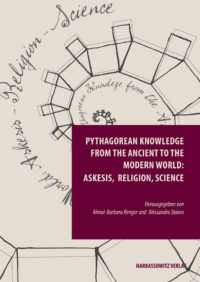The present book studies prayer as a category of Platonic religious thought, from Plato to Late Antiquity. Following a chronological framework (Plato, the pseudo-Platonic Second Alcibiades, Maximus of Tyre, Plotinus, Porphyry, Iamblichus, Proclus), the book examines the relationship between philosophical reflection on prayer and a series of themes and related topics: the criticism and the interpretation of traditional cults, the conceptualization of religious emotions, the philosophical explanation of how astrology and magic work, the theories of the soul, and the theological description of reality in Late Neoplatonism.
The book aims to contribute to shed new light on the relationship between religion and philosophy in Antiquity and, in particular, on the forms of “scientific” religion that appear and develop in the philosophical schools in Late Antiquity. Special attention is paid to the relationship between philosophy, religion, and rhetoric. The rhetorical dimension of prayer is explored in relation to the role of persuasion and emotion in prayer and to the idea that exegetical commentary represents a hymn in prose addressed to the gods.
Le présent ouvrage a pour objet la prière comme catégorie de la pensée religieuse platonicienne, de Platon à la fin de l’Antiquité. En suivant un plan chronologique (Platon, le Second Alcibiade pseudo-platonicien, Maxime de Tyr, Plotin, Porphyre, Jamblique, Proclus), il étudie la relation entre la réflexion philosophique sur la prière et une série de thèmes et de questions connexes : la critique et l’interprétation des cultes traditionnels, la conceptualisation des émotions religieuses, l’explication philosophique du fonctionnement de l’astrologie et de la magie, les théories de l’âme et la description théologique du réel dans le néoplatonisme tardif.
Cette recherche souhaite contribuer à jeter un éclairage nouveau sur les rapports entre religion et philosophie dans l’Antiquité et, en particulier, sur les formes « scientifiques » de religion qui apparaissent et se développent dans les écoles philosophiques à la fin de l’Antiquité. Une attention particulière est prêtée à la relation entre philosophie, religion et rhétorique. La dimension rhétorique de la prière est explorée en relation avec le rôle de la persuasion et de l’affectivité dans la prière et avec la conception selon laquelle le commentaire exégétique représente un hymne en prose adressé aux dieux.
I. Introduction
II. Platon. Prières des impies, prières des sages
1. Prier selon la loi
2. Les prières platoniciennes et la tradition religieuse
III. Le Second Alcibiade. À la recherche de la prière idéale
1. Le Second Alcibiade et la pensée religieuse à l’époque hellénistique
2. La prière de l’ἄφρων : demander un mal au lieu d’un bien
3. La prière pour les ἐσθλά du poète anonyme
4. La prière des Athéniens et la prière des Spartiates
IV. Maxime de Tyr. Prière traditionnelle et prière du philosophe
1. La critique de la prière traditionnelle
2. La définition d’une « prière du philosophe »
V. Plotin. Prière « magique » et prière du νοῦς
1. Prière, providence et responsabilité individuelle
2. Les prières peuvent-elles contraindre les astres ?
3. Prier et attendre Dieu
VI. Porphyre. Hiérarchie des êtres divins, hiérarchie des prières
1. La défense de la prière dans le Commentaire sur le Timée
2. La Lettre à Anébon : prier n’est ni contraindre, ni pâtir
3. La place de la prière dans la théorie du sacrifice
4. Prière du sage, prière des théurges
VII. Jamblique. La prière théurgique
1. Les réponses de Jamblique aux objections de Porphyre
2. La théorie de la prière de Jamblique
3. La prière finale de la Réponse à Porphyre (De mysteriis)
VIII. Proclus. La prière cosmique
1. L’οὐσία de la prière
2. La τελειότης de la prière
3. Les causes et les modes de la prière
4. La pratique de la prière
IX. Conclusions
Bibliographie
1. Sources
2. Littérature secondaire
Index locorum
Index rerum
Index verborum






